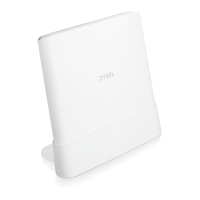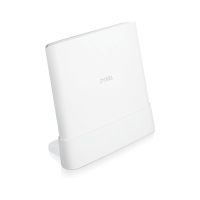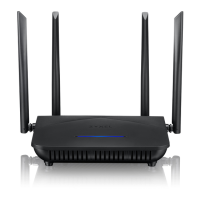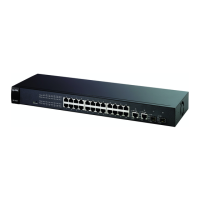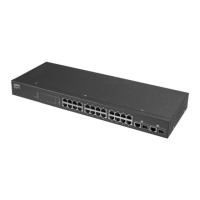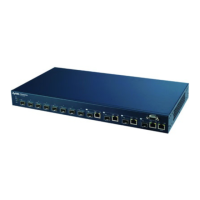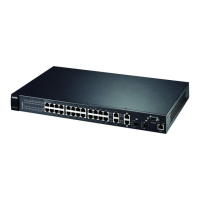Chapter 9 Network Address Translation (NAT)
AMG1202-T10A User’s Guide
129
9.3 The Port Forwarding Screen
Note: This screen is available only when you select SUA only in the NAT > General
screen.
Use this screen to forward incoming service requests to the server(s) on your local network.
You may enter a single port number or a range of port numbers to be forwarded, and the local IP
address of the desired server. The port number identifies a service; for example, web service is on
port 80 and FTP on port 21. In some cases, such as for unknown services or where one server can
support more than one service (for example both FTP and web service), it might be better to
specify a range of port numbers. You can allocate a server IP address that corresponds to a port or
a range of ports.
The most often used port numbers and services are shown in Appendix E on page 279. Please refer
to RFC 1700 for further information about port numbers.
Note: Many residential broadband ISP accounts do not allow you to run any server
processes (such as a Web or FTP server) from your location. Your ISP may
periodically check for servers and may suspend your account if it discovers any
active services at your location. If you are unsure, refer to your ISP.
Default Server IP Address
In addition to the servers for specified services, NAT supports a default server IP address. A default
server receives packets from ports that are not specified in this screen.
Note: If you do not assign a Default Server IP address, the ZyXEL Device discards all
packets received for ports that are not specified here or in the remote management
setup.
Full Feature Select this radio button if you have multiple public WAN IP addresses for your
ZyXEL Device.
Max NAT/Firewall
Session Per User
When computers use peer to peer applications, such as file sharing applications,
they need to establish NAT sessions. If you do not limit the number of NAT
sessions a single client can establish, this can result in all of the available NAT
sessions being used. In this case, no additional NAT sessions can be established,
and users may not be able to access the Internet.
Each NAT session establishes a corresponding firewall session. Use this field to
limit the number of NAT/Firewall sessions client computers can establish through
the ZyXEL Device.
If your network has a small number of clients using peer to peer applications,
you can raise this number to ensure that their performance is not degraded by
the number of NAT sessions they can establish. If your network has a large
number of users using peer to peer applications, you can lower this number to
ensure no single client is exhausting all of the available NAT sessions.
Apply Click this to save your changes.
Cancel Click this to restore your previously saved settings.
Table 41 Network > NAT > General (continued)
LABEL DESCRIPTION
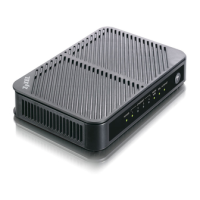
